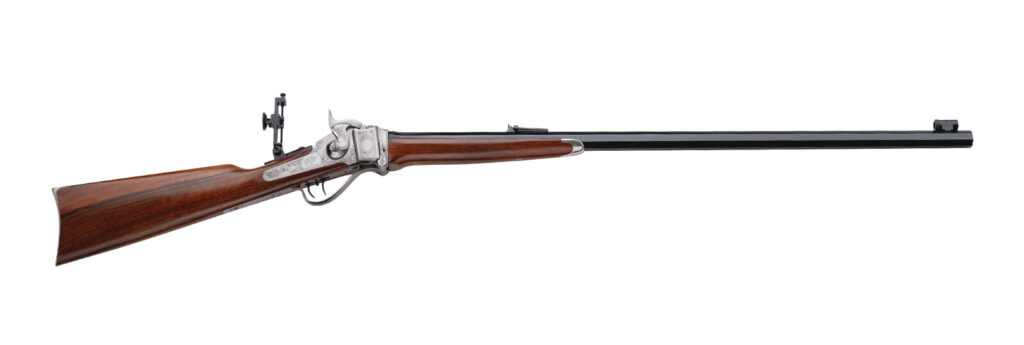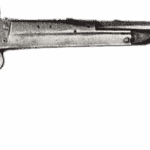
Christian Sharps: The Man Behind the Mechanism of the Sharps Rifle
Christian Sharps was one of the most significant firearm designers of the 19th century, responsible for revolutionizing breech-loading technology at a time when muzzle-loading firearms still dominated the battlefield and frontier. Born on January 2, 1811, in Washington, New Jersey, his innovations helped shape the future of American firearms, leaving a lasting impact on both military and civilian shooting. Though many of his designs would go on to achieve legendary status, Sharps himself remained more of an inventor than an industrialist, often stepping away from the companies that bore his name.
The Harpers Ferry Years: Learning from a Pioneer
Sharps' early career was shaped by his time at Harpers Ferry Armory in Virginia, where he worked as a mechanical engineer and gunsmith. While at Harpers Ferry, Sharps gained invaluable experience under John H. Hall, a key innovator in firearm production. Hall was instrumental in developing interchangeable parts manufacturing, an advancement that would later define the industrial age. Working under Hall provided Sharps with firsthand exposure to precision machining and mass production techniques, skills that he would incorporate into his own firearm designs.
The 1848 Patent: A Falling Block Revolution
In 1848, Christian Sharps received U.S. Patent No. 5,630, which introduced a falling block breech-loading mechanism. This system allowed for a faster and more efficient means of reloading compared to the traditional muzzle-loaders of the time. The design worked by utilizing a breech block that lowered to allow the insertion of a cartridge, which was then locked into place before firing. Unlike earlier breech-loading concepts, Sharps’ mechanism provided a tight gas seal, reducing leakage and improving the firearm’s overall performance.
His invention arrived at a time when military planners were beginning to look for alternatives to slow, cumbersome muzzle-loaders, making it a pivotal moment in firearm evolution.
The A.S. Nippes Collaboration: Early Production Begins
Before launching his own manufacturing company, Sharps partnered with A.S. Nippes, a well-established firearms maker in Mill Creek, Pennsylvania. Nippes was the first manufacturer to produce Sharps’ breechloaders, incorporating them into early models used by the U.S. military. This partnership provided Sharps with valuable manufacturing experience, allowing him to refine his design before full-scale production began elsewhere.
Sharps rifles produced under Nippes’ supervision saw limited but notable use, marking the beginning of what would become one of the most famous firearm families in history.
The Formation of Sharps Rifle Manufacturing Company (1851)
In 1851, the Sharps Rifle Manufacturing Company was established in Hartford, Connecticut, with the goal of producing Sharps rifles on a larger scale. However, Sharps himself was not the primary owner of the company. The firm was largely controlled by investors, and while Sharps contributed his expertise, he had little say in the company’s financial decisions.
Early production at the Hartford facility was slow, so the company contracted Robbins & Lawrence, a Vermont-based firm specializing in industrial machining and firearms manufacturing, to produce the first true Sharps rifles.
The Robbins & Lawrence Partnership: Scaling Up Production
The Model 1851 Sharps, often referred to as the "John Brown Sharps," was among the first large-scale Sharps rifles to be produced. This model gained historical significance when abolitionist John Brown armed his followers with these rifles during the conflict known as "Bleeding Kansas", cementing the weapon’s reputation as an efficient and reliable firearm.
Robbins & Lawrence played an essential role in streamlining the mass production of Sharps rifles, utilizing advanced machining techniques to ensure consistent quality. Without their expertise, the Sharps rifle may never have reached the level of success it eventually achieved.
Christian Sharps’ Departure and C. Sharps & Company (1853)
In 1853, Christian Sharps left Sharps Rifle Manufacturing Company due to disagreements with investors over the direction of the business. After his departure, he founded C. Sharps & Company in Philadelphia, but this firm did not produce rifles. Instead, it specialized in small single-shot derringers and pocket pistols, vastly different from the rifles that bore his name.
The Hartford-based Sharps Rifle Manufacturing Company continued without him, expanding into military contracts and refining the rifle's design for combat and civilian use.
Sharps Rifles in Combat: The Civil War Era
Sharps rifles became one of the most widely used breechloaders of the American Civil War, particularly in the hands of Union cavalry units and elite sharpshooters. Some of the most famous models included:
- Sharps Model 1853 – An improved version of the 1851, featuring refinements in sealing the breech.
- Sharps Model 1859 – One of the most widely issued models during the war.
- Sharps Model 1863 – An updated version featuring a new gas-seal improvement.
- Sharps New Model 1865 – A transitional model produced after the war.
Many of these rifles were chambered in .52 or .54 caliber, firing paper or linen cartridges that made reloading far quicker than traditional muzzle-loaders.
The Sharps-Borchardt Model 1878: A Final Innovation
After Christian Sharps’ death in 1874, the Sharps Rifle Manufacturing Company continued to innovate. One of their last major designs was the Sharps-Borchardt Model 1878, created in partnership with Hugo Borchardt (who would later influence the development of automatic pistols).
Unlike previous models, this rifle was hammerless, relying on an internal striker-fired system. It was one of the most advanced single-shot rifles of its time and saw use among buffalo hunters and target shooters. Unfortunately, by the early 1880s, demand for single-shot rifles declined as repeating rifles gained dominance, leading to the eventual closure of the company.
The Modern Revival: C. Sharps Arms and Shiloh Rifle Manufacturing
Although the original Sharps Rifle Manufacturing Company ceased operations, the legacy of Sharps rifles continues today. Modern gunmakers such as C. Sharps Arms (founded in 1975 in Montana) and Shiloh Rifle Manufacturing Company have revived the classic Sharps designs, producing high-quality reproductions of the 1859, 1863, and 1874 models for collectors, hunters, and competitive shooters.
These rifles maintain the traditional falling block mechanism and high-caliber chamberings, making them popular in black powder cartridge shooting competitions and among long-range marksmen.
The Legacy of Christian Sharps
From his early years at Harpers Ferry to his game-changing 1848 patent, from his partnerships with A.S. Nippes and Robbins & Lawrence to the massive production efforts of Sharps Rifle Manufacturing Company, the legacy of Christian Sharps is one of relentless innovation. His falling block breech-loading system set new standards for efficiency, accuracy, and reliability, ensuring that his name would be remembered alongside the greatest firearm inventors of all time.
Even though Christian Sharps did not live to see the end of the company that bore his name, his influence remains deeply embedded in American firearms history, with modern manufacturers still honoring his designs. The Sharps rifle endures as a symbol of craftsmanship, precision, and historical significance, standing as one of the most legendary firearms of the 19th century.
Read more about these weapons here:
If you know of any forums or sites that should be referenced on this listing, please let us know here.








